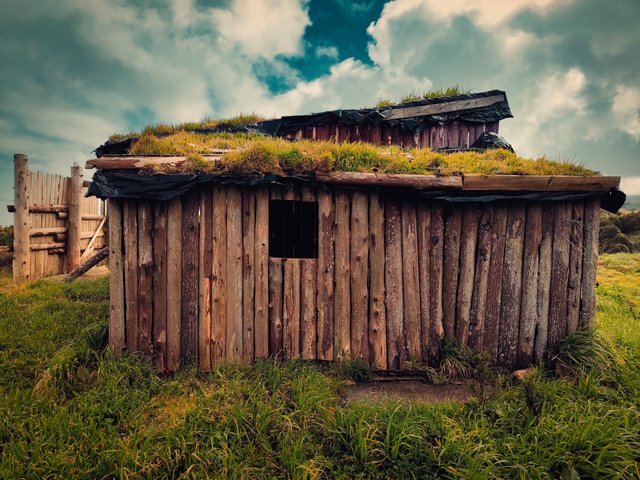📷Curiosities about the Azores Archipelago
Italy Community
✅1594 | The Combat and Explosion of the Beautiful Ship Cinco Chagas
The lucrative results of privateering continued to be stimulating for the English. Therefore, in the year 1594, the Earl of Cumberland and some wealthy merchants of the city of London had armed three ships of about 300 tons to dedicate themselves to privateering against Portuguese and Spanish ships in the seas of the Azores.
These ships were the Royal Exchange, commanded by George Cave; the Mayflower, commanded by William Anthony; the Sampson, commanded by Nicholas Dowton; and also the pinnace Violet. They set sail from Plymouth on April 6, 1594, and after capturing a small barque off the Portuguese mainland coast, they arrived in the Azores on June 12.
On June 22, those ships sighted a large Portuguese carrack returning from Goa and approaching the island of Faial. It was the Cinco Chagas, "very large and beautiful," which had been built in Bassein and was commanded by D. Francisco de Melo Canaveado. It had sailed from Goa to Lisbon in 1593 but had wintered in Mozambique, where it embarked people and cargo from the ship Nossa Senhora da Nazaré, which had been left there unable to sail. It was larger and carried more valuable cargo than the carrack Madre de Deus, which had been captured in the Azores in 1592, coming loaded "with much wealth and with about four hundred souls, of which two hundred and seventy were slaves and one hundred and thirty were Portuguese, among whom were some nobles and soldiers."
"With great storms and hardships," the ship passed the Cape of Good Hope and, according to its instructions, headed for Luanda to take on water and provisions, but also to avoid any encounters with English ships near the island of Saint Helena. From Luanda, it sailed uneventfully to the Azores and sighted the island of Corvo. However, instead of sailing directly to Lisbon as its instructions indicated, the ship decided to head for the island of Faial because it needed water and provisions.
The account compiled by Melchior Estacio do Amaral in Tratado das Batalhas, e Successos do Galeam Santiago com os Olandezes na Ilha de Santa Elena e da Nao Chagas com os Inglezes entre as Ilhas dos Açores, which was published in 1604, reveals the outlines of the tragedy that was approaching, in the chapter he titled Relaçam do horendo espectaculo, Batalha, & Sucesso da nao Chagas da carreyra da India, que ardeo entre as Ilhas dos Açores no anno de 1594.
[...] & it arrived in sight of Corvo, which it could not reach due to the contrary wind, & going on the tack towards Faial on the twenty-second of June of the year 1594, it sighted three large ships immediately recognized as English, & they were all of a size, from three hundred to four hundred tons, & one of them belonged to the Earl of Cumberland, of which Ckeve, Captain of Infantry, was the General, & his Admiral was Captain Anthony. They were manned by many fighting men, & many large bronze artillery pieces, of which each ship had two tiers, which included reinforced battering cannons, & many weapons, & war materiel, & they were ships of such quality that each one alone could fight our ship Chagas [...].
On June 22, as mentioned, "being south of the channel between Pico and Faial," the English ships began combat with their artillery and musketry against the Portuguese ship, where its commander had ordered everyone to prepare for battle.
This initial clash resulted in the Royal Exchange being hit and withdrawing, although the other two English ships continued to attack the Cinco Chagas for a few more hours, until they also withdrew with considerable damage.
On the morning of the following day, the English ships had regrouped and returned to attack the Portuguese ship, but they were seriously hit and withdrew.
[...] & when midday arrived, a cruel & dreadful battle of cannons & muskets was joined with the enemies, without in all that day, & all the following night until the next day, in all those twenty-four hours, there being no hour nor moment in which the terrible battery ceased, with many dead on both sides, our ship being more attacked & battered by the stern [...].
Around noon, the English ships opted to board, with the Royal Exchange managing to grapple midships with the Portuguese ship, while the Mayflower grappled by the quarter and the Sampson by the port bow. With the Cinco Chagas grappled by the three English ships, the Portuguese reacted energetically, and with their cannonballs, musket fire, and powder pots, they forced the English to retreat and fail to board the Cinco Chagas. The combat continued with many casualties on all ships, and twice the English tried to board the Portuguese ship, with the commander of the Mayflower being mortally wounded in one of these attempts.
[...] having thus all three attacked, artillery was fired from both sides, with swivel guns, chain shot, & pikes, there was great damage on all, together with the musketry, & ammunition from the tops rained down pots & fire-pots, darts, & stones, & along the sides burned bombs, & fire lances, with many dead & wounded falling from all parts, the four ships being made a living inferno, & rivers of blood, such were the strong & determined English combatants for the prize, & the Portuguese determined to disabuse them of it. The sea was red with blood fallen from the scuppers, the decks strewn with dead, & fire set to the ships in some parts, the air so filled with smoke that not only could they not see each other clearly, but many could hardly recognize each other, blackened & smeared with fire & gunpowder. Those from the Island of Faial who saw these ships attack did not see them during the battle, because a thick, black cloud of smoke covered them, within which they heard the fearful thunder of the battle [...].
The fire raged in all the ships, but "the musket shots killed any of ours who appeared to extinguish the fire, because even with it thus ignited, the battle did not cease on either side." Meanwhile, with fire on board, the Sampson moved away from the fight, as did the other two ships afterward, with damage and many casualties, "there having been a great four hours that they were boarded."
However, the fire that raged on the Cinco Chagas was already out of control with "great flames," and "without any remedy" and in despair, many of its crew began to throw themselves into the water, including women and children. The failure of their attempt to capture the Portuguese ship wounded the pride of the English, who tried to put their boats in the water to, out of mere revenge, relentlessly pursue and murder the Portuguese castaways.
By a happy chance, a cabin boy who, with other castaways, was clinging to the bowsprit mast that served as his lifebuoy, waved precious stones at one of the English boats, promising to give them to them if they did not kill him, and "by the great mercy of God," the signal worked. Thirteen people were saved, including two nobles – Nuno Velho Pereira, who had been captain of Sofala, and Brás Correia, who had commanded the aforementioned ship Nossa Senhora da Nazaré – as well as eleven sailors and slaves.
At nightfall, the fire reached the powder magazine of the Cinco Chagas, which exploded and killed those who were still on board.
In the battle, the English lost more than eighty-five people, and more than one hundred and fifty were badly wounded, of whom some were dying every day. Captain Antonio [who commanded the Mayflower], who was Admiral, also died there, and General Ckeve [who commanded the Royal Exchange] was so wounded in the knees that he could never get out of bed again, and from that he died in England.
The English ordered eleven survivors to be landed on the coasts of Faial, although they retained Nuno Velho Pereira and Brás Correia to obtain a future ransom. These two nobles were taken to England, where they were treated "excellently" and where the English "were astonished that, being our people so few, they had killed and mistreated so many of theirs," and they were ransomed a year later for three thousand cruzados.

I am sharing photos of landscapes, moments and experiences. Nature and sea are the most visited themes in my photo collection, but any attention-grabbing aspect can be photographed. Hope you enjoy it...
| Category | #italy |
| Location | São Miguel Island - Azores |

)
Upvoted! Thank you for supporting witness @jswit.
Great story telling of a sea battle true in history. Wonderful picture too!
You should have a lot more votes.
Thank you for the visit and for the encouraging comment. More votes? Who knows, maybe one day! For now, I’m happy with these visits from real users (just like you and me)! Cheers :)